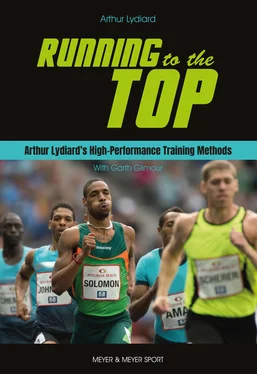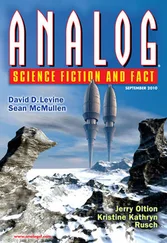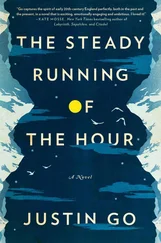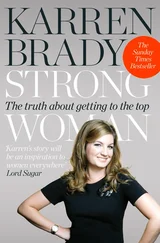I often refer back to Lasse Viren, who, after his first Olympic triumphs, was injured and out of running for a couple of seasons but then came back as great as before. The American accused him of blood-doping, which was ridiculous. The reason was simply that I had taught the Finns how to construct a programme and follow it to achieve peaks when they wanted them – and the Finns had listened and learned. Viren knew the programme that got him his first Olympic medal; all he had to do to win some more was repeat it.
Many of the medal winners in the Olympics are not the best athletes but they are the best-prepared athletes on the day of competition. I cannot emphasise this strongly enough: A world of difference lies between the two.
So that, fairly succinctly, is what this book is all about: Guiding you to get all those 21 elements together in the right place at the right time for you to attain your selected goals in athletics.
Let’s begin by considering why running is for everyone – from potential Olympic champion to the woman or man, girl or boy who merely wants to get that extra enjoyment and satisfaction out of life that spring from simple physical and mental fitness.
CHAPTER 2
WHY IS RUNNING VALUABLE?
The key that opens the first door to your goal is oxygen. We can be healthy without being fit. Or we can be fit without being healthy. What we need to aim for is both fit-ness and health. The first fundamental we have to recognise, in trying to reach this happy combination of both, is that nearly every metabolic reaction in the human body depends, directly or indirectly, on oxygen. The key, therefore, is to achieve the best oxygen uptake level possible to feed the metabolic processes.
The second fundamental is that the only way we are going to get that higher oxygen uptake level is by steadily exercising over long periods – and the only way we can do that, day after day, is by maintaining the exercise at an aerobic level, not an anaerobic level.
What’s the difference? Aerobic exercise requires the presence of oxygen; anaerobic exercise does not. A muscle can contract for a while under the anaerobic conditions of inadequate oxygen supply but, sooner or later, the restoration of an adequate oxygen supply is essential for the recovery of that muscle or it ceases to function efficiently.
Drs Laurence Morehouse and Augustus Miller in their Physiology of Exercise say quite simply that aerobic metabolism is far more efficient than anaerobic metabolism because more energy is derived from a given amount of foodstuff when the reactions occur under aerobic rather than anaerobic conditions. So it follows that aerobic activity can be sustained by drawing energy from the oxygen we supply to the operating muscles and, the more efficient the supply, the more efficient and enduring will be the activity.
This brings us to the heart, the large pumping muscle which transports oxygenated blood from the lungs through the bloodstream to supply those muscles. We have to teach that pump to work progressively harder to take more blood with more oxygen to where it’s wanted. Only one set of the body’s multitude of muscles can work long enough and hard enough to maintain a reasonably high aerobic pressure on the blood vascular and cardio-respiratory systems to achieve that desired result. They are the quadriceps, the large muscles at the front of the thigh.
An evaluation of various sports has proved that the activity that best produces this consistent aerobic pressure is cross-country skiing. It works all muscles but it works the quadriceps best. Not everyone is in a position to go cross-country skiing all the year round but, fortunately, next comes an activity which is available to virtually everyone – running. Running lifts the body weight against gravity, largely using the upper leg and thigh muscles hard enough and long enough to get a better result even than cycling, which ranks next, rowing or walking.
Swimming, for instance, is well down the list because the body weight is buoyant in water. Once swimmers reach a level of endurance and technical skill, they can go through the water fairly well without too much strain and without exerting that required level of pressure on the heart that running achieves. Compare swimmers at the end of a 1,500-metre race with runners who have just competed over the same distance.
To use running as the cornerstone of fitness depends on the development of a programme that enables us to maintain that aerobic pressure at its upper limits – just short of tipping into anaerobic effort – for long periods.
You cannot build a house without a solid foundation; you cannot build good physical condition without a sound aerobic foundation. We can use a variety of exercises to develop muscular efficiency and strengh but we also need muscular endurance to acquire real fitness.
One of my favourite photos is of two large German shotputters standing on either side of a girl marathon runner. Her weight is half that of the shotputters but tests determined that she had twice their cardiac output. These huge men, briefly, could move heavy weights a considerable distance but both had poor blood vascular and cardiorespiratory efficiency. The small girl’s, developed by long aerobic running, was 100 per cent better.
Particularly as we get older, we need not only good muscular strength to keep our muscles toned, we also need to improve our cardiovascular system. We breathe in a lot of oxygen but, unless we have that efficiency, we also waste a lot. If we can improve the blood flow per minute from heart to lungs and back, we create the opportunity to assimilate more of that oxygen.
And, of course, once we get the extra oxygen into the body, we can improve the circulatory system. We know from testing older walkers, distance runners, cyclists and other athletes that their circulatory systems are very well defined and efficient; many times more developed than those of sedentary people.
To improve our ability to transport more oxygen and then use it and our blood sugars through muscular endurance, we need good capillary beds. These can be developed quite substantially by continuous aerobic use of muscle groups over long periods.
All living cells, plant and animal alike, contain mitochondria, aptly called the powerhouses of the cell system. Mitochondria metabolise carbohydrates and fatty acids to carbon dioxide and water and release energy-rich phosphate compounds in the process. All the activities of life – growth, movement, irritability, reproduction and others – require the expenditure of energy by the cells but the number of mitochondria per cell may range from a few to more than a thousand. Mitochondria move, change size and shape and fuse with each other to form bigger structures or split apart to form shorter ones and are usually concentrated in the region of the cell with the highest rate of metabolism.
Living cells are not heat engines and cannot use heat energy to drive these reactions. Instead, they must use chemical energy, chiefly in the form of energy-rich phosphate bonds.
Adenosine triphosphate (ATP) is the chemical which is the source of our energy. The ATP stored in the working muscles is sufficient to work for only a few seconds but the muscles also contain creatine phosphate, which is there for rebuilding ATP. It, too, is limited to about 15 to 20 seconds of strenuous exercise.
This is where the delicate balance between aerobic and anerobic exercise plays its part. A marathon runner, employing a moderate work-rate, can get enough oxygen to economically burn fat and glycogen. This enables ATP to be rebuilt as fast as it is being used and the trained runner, working aerobically, can continue for several hours – in the case of the elite ultrarunner, for day after day of steady aerobic output.
Читать дальше












